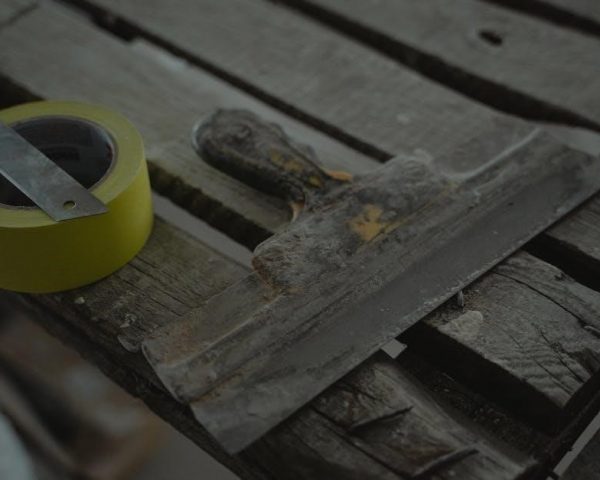Selecting the right Jiu Jitsu Gi size is crucial for optimal performance and comfort during training or competition. This guide provides essential information to help practitioners choose a Gi that fits perfectly, considering factors like height, weight, and personal fit preferences. With varying brand-specific sizing and differences between training and competition requirements, this guide offers a clear roadmap to finding your ideal Gi size.
Overview of Jiu Jitsu Gi Sizing
Jiu Jitsu Gi sizing is determined by a combination of height, weight, and fit preferences, with sizes ranging from A0 to A6 for adults. Each size corresponds to specific measurements for jacket and pant lengths, ensuring a comfortable and functional fit. While height and weight are primary factors, personal preference for slim, standard, or loose fits also plays a role. Additionally, brands often have unique size charts, requiring careful comparison. Proper sizing is essential for mobility and performance, whether for training or competition. Understanding these elements helps practitioners select a Gi that meets their needs and enhances their Jiu Jitsu experience.
Importance of Choosing the Right Gi Size
Choosing the right Jiu Jitsu Gi size is essential for both performance and comfort. A well-fitting Gi ensures optimal mobility, preventing restrictions during techniques. Proper sizing also enhances durability, as ill-fitting Gis may wear out faster or cause discomfort. In competitions, correct sizing is mandatory to meet regulations, and improper fit can lead to disqualification. Additionally, a Gi that fits correctly provides confidence and focus, allowing practitioners to train effectively without distractions. Whether for training or competition, the right size ensures a better Jiu Jitsu experience, making it a critical decision for all practitioners.
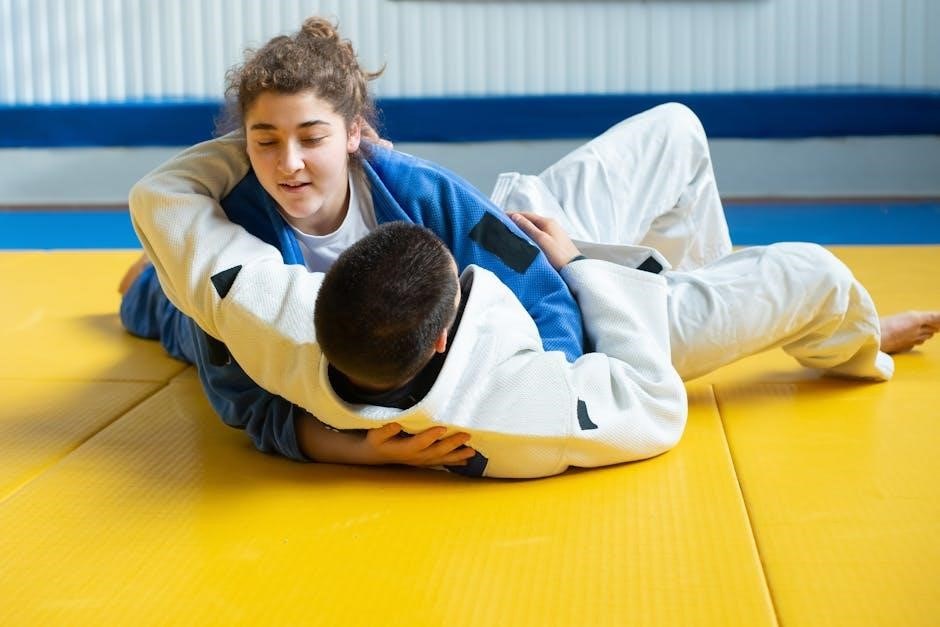
Factors Influencing Jiu Jitsu Gi Size
Height, weight, and fit preferences are key factors in determining the right Jiu Jitsu Gi size. Brand-specific sizing variations also play a significant role in selection.
Height and Weight Considerations
Height and weight are primary factors in selecting a Jiu Jitsu Gi size. Most brands use a combination of these measurements to determine the appropriate size range. Typically, sizes range from A0 to A6, with each size corresponding to specific height and weight guidelines. For example, an A1 size might suit someone between 5’2″ and 5’6″ and weighing 130-150 lbs. It’s important to refer to the brand’s specific size chart, as variations exist. Ensuring the Gi fits well is essential for both comfort and performance during training or competition. Proper fit prevents restrictions in movement and enhances overall training efficiency.
Fit Preferences (Slim, Standard, Loose)
Fit preferences play a significant role in choosing a Jiu Jitsu Gi. Slim-fit Gis are designed for athletes who prefer a more tailored look, reducing excess material for better mobility. Standard-fit Gis offer a balanced cut, suitable for most practitioners, providing comfort without being too tight or loose. Loose-fit Gis are ideal for those who prefer a more relaxed feel or need durability for heavy training. Each fit style caters to different training needs and personal comfort preferences. When selecting a Gi, consider how the fit aligns with your training style and body type to ensure optimal performance and comfort on the mat.
Brand-Specific Size Variations
Brand-specific size variations are a critical factor in selecting the right Jiu Jitsu Gi. Different brands often have unique size charts, which can make choosing the correct size challenging. Some brands cater to specific body types or training styles, offering slim, standard, or loose fits. For example, Sanabul Gis are known for sizing differently compared to other brands, requiring careful measurement. Additionally, certain brands may prioritize durability or mobility, affecting how their Gis fit. Always consult the brand’s size chart and consider factors like shrinkage after washing. Personal fit preferences also play a role, as some brands offer more tailored cuts while others provide a looser fit for comfort and ease of movement.

Understanding Jiu Jitsu Gi Size Charts
Jiu Jitsu Gi size charts are designed to help practitioners find the perfect fit by providing measurements for sleeve length, pant length, and jacket length. Each brand’s chart varies, so it’s essential to consult the specific guidelines for accurate sizing. These charts typically consider height, weight, and fit preferences, ensuring comfort and performance during training or competition. Always check the size chart before making a purchase to avoid sizing errors and ensure the Gi meets your needs.
How to Read a Size Chart
Reading a Jiu Jitsu Gi size chart involves matching your height and weight to the corresponding size. Start by locating your height range and cross-reference it with your weight to find the recommended size. Pay attention to key measurements such as sleeve length, pant length, and jacket length, as these ensure proper fit. Slim, standard, and loose fit options may also be indicated. Some charts include alphanumeric sizing (e.g., A1, A2), while others use numerical sizes. Always double-check the brand’s specific sizing guidelines, as variations exist. If unsure, consult the brand’s fit guide or customer reviews for additional insights.
Key Measurements: Sleeve Length, Pant Length, and Jacket Length
Accurate measurements of sleeve length, pant length, and jacket length are essential for a proper fit. Sleeve length should extend to your wrists when arms are relaxed, allowing full mobility. Pant length should reach just above the ankle, ensuring comfort and movement. Jacket length should align with your hipbone for optimal coverage. These measurements vary by brand and fit style (slim, standard, loose). Always compare your body measurements to the size chart to ensure the best fit. Proper sizing prevents issues like overly long sleeves or excessively short pants, which can hinder performance. Double-checking these key measurements ensures a comfortable and functional Gi.
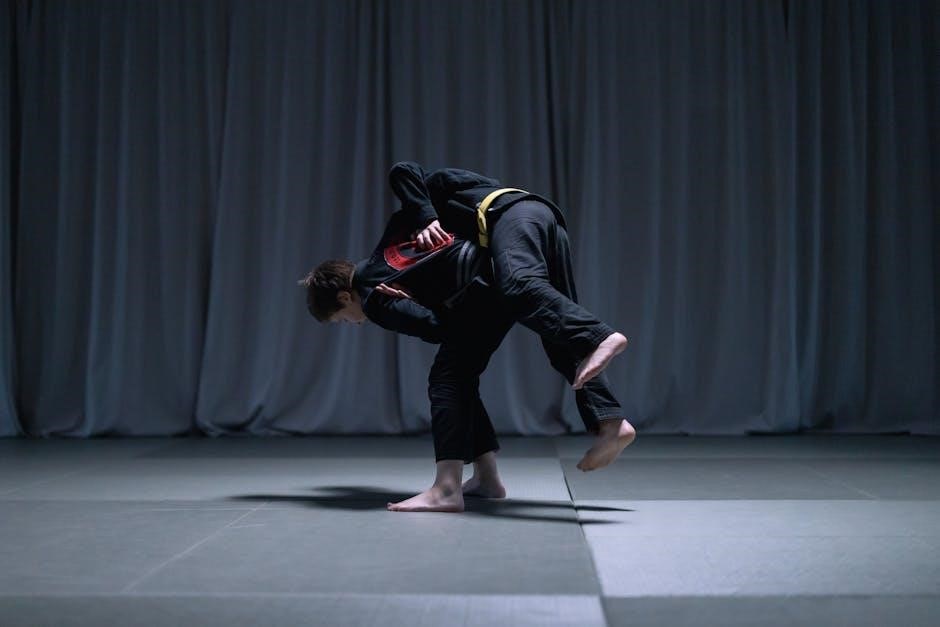
Step-by-Step Guide to Choosing the Right Gi Size
- Measure your height and weight accurately.
- Consult the brand’s size chart for your measurements.
- Consider your preferred fit (slim, standard, or loose).
- Select the size that aligns with your preferences.
Measuring Your Height and Weight
To determine your Jiu Jitsu Gi size, start by accurately measuring your height and weight. Stand straight against a wall to measure height in inches or centimeters. Use a reliable scale for weight in pounds or kilograms. These measurements are essential as most size charts are based on height and weight ranges. Ensure you measure without shoes or heavy clothing for accuracy. Some brands may require additional measurements, such as sleeve or pant length, but height and weight are the primary factors. Record your measurements clearly to match them against the size chart effectively. Precise measurements help ensure a comfortable and proper fit for your Gi.
Matching Your Measurements to the Size Chart
Once you have your height and weight measurements, compare them to the size chart provided by the brand. Most charts categorize sizes (e.g., A0 to A6) based on height and weight ranges. Locate your height in the chart and cross-reference it with your weight to find the corresponding size. Pay attention to any additional notes, such as fit preferences (slim, standard, loose). If your measurements fall between sizes, consider your fit preference or consult the brand’s sizing guide for clarification. Accurate alignment ensures a comfortable and functional fit for training or competition. Double-check your measurements to avoid sizing errors and ensure the best possible fit.
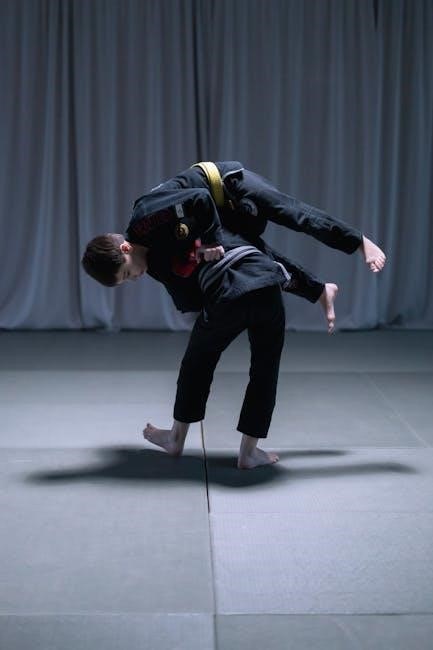
Special Considerations for Jiu Jitsu Gi Sizing
Consider shrinkage, as some Gis may tighten after washing; Competition Gis often have stricter size regulations than training Gis, affecting your choice. Always check brand guidelines.
Competition vs. Training Gi Requirements
Competition and training Gis have distinct requirements. Competition Gis must adhere to strict size regulations, ensuring sleeves and pants meet specific length guidelines, while training Gis prioritize comfort and durability. Competition Gis are designed to meet official standards, with tighter fits to prevent grip advantages, and may require pre-approval. In contrast, training Gis offer more flexibility in fit and fabric weight. Brands often tailor their Gis for these purposes, so choosing the right one depends on your primary use. Always check size charts and regulations to avoid disqualification in competitions. Understanding these differences ensures optimal performance and compliance with training or competition demands.
How Washing and Shrinking Affect Fit
Washing and shrinking can significantly impact the fit of your Jiu Jitsu Gi. Natural fibers, like cotton, tend to shrink after washing, especially in warm water. This can cause sleeves and pants to become shorter and tighter. To avoid a ill-fitting Gi, consider washing in cold water and air-drying to minimize shrinkage. Some brands offer pre-shrunk Gis to reduce this issue. It’s also wise to check if your Gi is designed to shrink slightly before purchasing. If you prefer a looser fit, sizing up initially can help accommodate potential shrinkage. Always follow brand-specific washing instructions to maintain the optimal fit and durability of your Gi.

Common Mistakes in Jiu Jitsu Gi Sizing
Common mistakes include choosing a Gi that is too small or too large, often due to ignoring brand-specific size variations and not considering personal fit preferences.
Choosing a Gi Too Small or Too Large
Choosing a Gi that is too small can restrict movement and cause discomfort, while a Gi that is too large may lead to excess fabric interfering with techniques. Many practitioners make the mistake of guessing their size without consulting a size chart, resulting in an ill-fitting uniform. A Gi that is too tight can dig into shoulders or hips, while an oversized Gi may bunch up during rolls, creating distractions. Proper fit is essential for both performance and safety. Always measure carefully and refer to brand-specific charts to avoid these common pitfalls. Remember, the right fit enhances training and overall performance.
Ignoring Brand-Specific Sizing Differences
One of the most common mistakes in choosing a Jiu Jitsu Gi is ignoring brand-specific sizing differences. Each brand has its own unique size chart, and assuming a universal fit can lead to disappointment. Some brands, like Sanabul, size differently than others, and not accounting for this can result in a Gi that’s either too tight or too loose. This oversight can cause discomfort, restrict movement, or even lead to premature wear. Always consult the specific brand’s size chart before making a purchase, as their measurements may vary significantly from what you’re used to. Proper fit is key to optimal performance and longevity of the Gi.
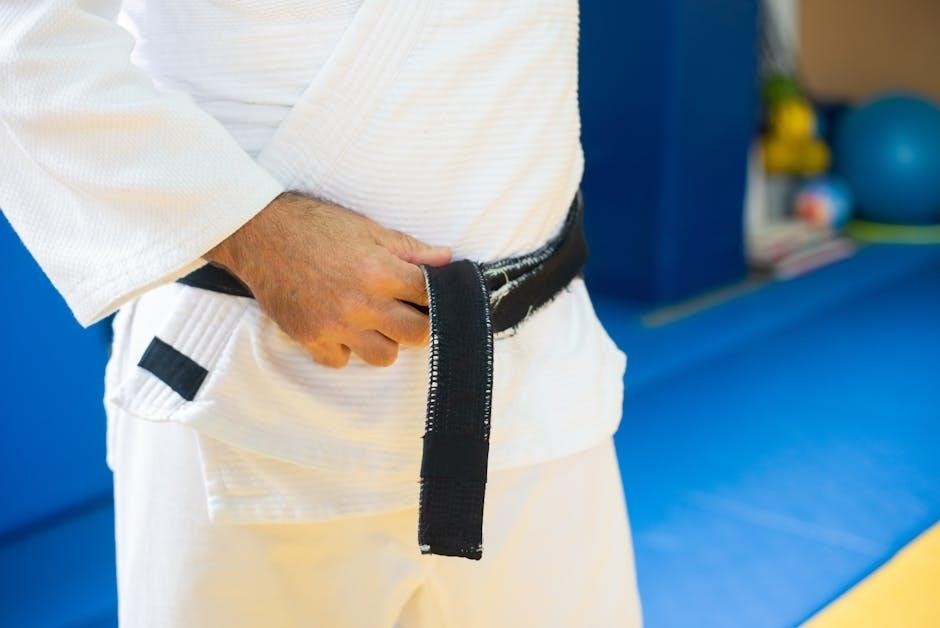
Troubleshooting Jiu Jitsu Gi Fit Issues
If your Gi is too tight or loose, consider exchanging it or consulting the size chart again. Ensure proper fit by double-checking measurements for optimal performance and comfort.
What to Do If Your Gi Is Too Tight or Too Loose
If your Gi is too tight, consider exchanging it for a larger size or resizing it slightly. For a loose fit, alterations like tailoring can provide a better fit. Always wash your Gi in cold water to prevent further shrinking. If the issue persists, refer back to the brand’s size chart to ensure accurate measurements. Adjusting sleeve or pant lengths can also improve comfort. Remember, a well-fitting Gi enhances performance and comfort during training or competition.

